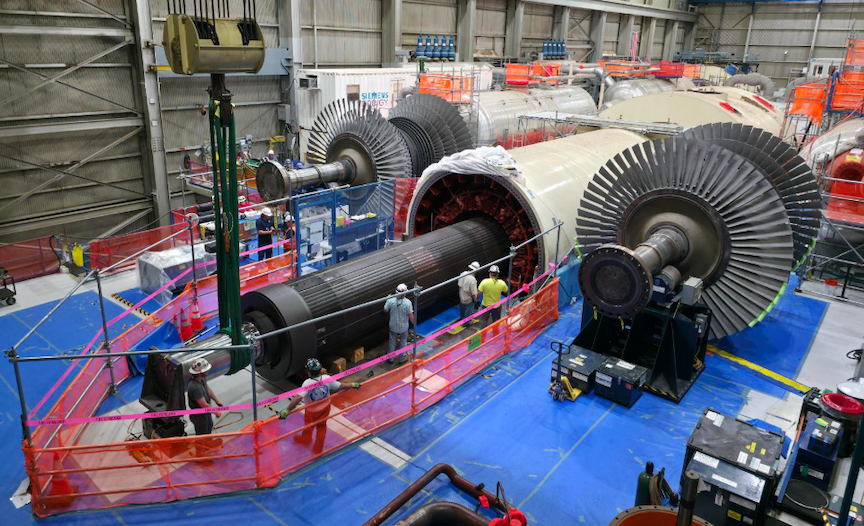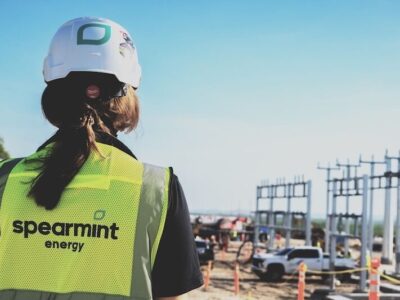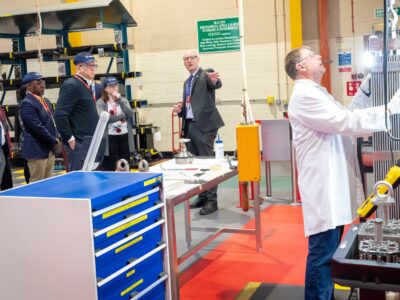During National Clean Energy Week, Melody Rodriguez, director of federal government affairs at the Nuclear Energy Institute (NEI), led a discussion about exciting advancements in U.S. nuclear development.
ClearPath CEO Jeremy Harrell opened the conversation by expressing his excitement: “I’ve never been more excited about the future for nuclear power, and there’s really four major reasons for that.” First, he pointed to the “immense private sector momentum” leading to innovation and new builds. Second, he highlighted the influx of an “immense amount of new investors into the sector.” Third, he emphasized the “immense new demand” for nuclear, with more than thirty-one countries committed to increasing their nuclear capacity. For example, President Trump announced a goal to add 300 gigawatts of new capacity by mid-century, four times more than currently exists. Finally, Harrell said, “We’ve seen, finally, bipartisan policy support over the last decade.”
David Brown, vice president of federal government affairs and public policy at Constellation Energy, a commercial nuclear plant owner and operator, expanded on how the country is using new nuclear facilities to meet rising energy demand: “Five years ago, we were actually closing plants. Today, we’re looking at new build and all the rest that goes with it.” Public and political support led to the policy support and price support that enabled this to become a reality.
Constellation, meanwhile, is focused on “trying to squeeze as much juice as we can out of the existing fleet” in a variety of ways, according to Brown. First, the company is restarting Three Mile Island’s Unit One reactor in Pennsylvania, now called the Crane Clean Energy Center. Representing a $1.6 billion investment for Constellation, Brown testified that it was “just a fraction of what a brand new plant that size would normally cost.” Additionally, Constellation is uprating its plants by upgrading components and equipment to make the facilities more efficient and “get more megawatts out of the same unit.” Having already announced several hundred megawatts of projects, Brown estimates that “there are probably another 1000 megawatts that our fleet is capable of producing.” Lastly, Constellation is in the process of relicensing its existing units, as “there’s no reason that they can’t continue to be operated safely and efficiently.”
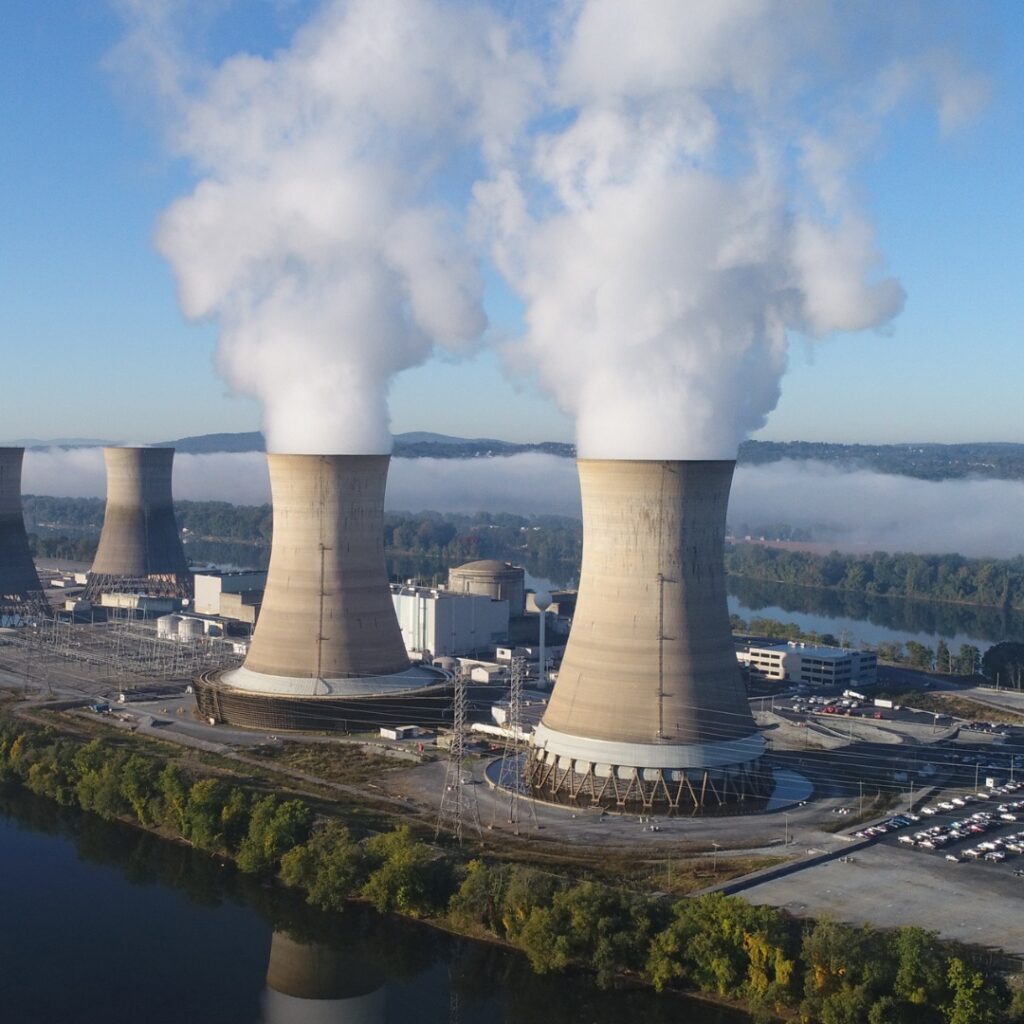
Photo Courtesy Cumberland County, PA – Department of Public Safety
Holtec International is also planning to restart a nuclear plant. Patrick O’Brien, the company’s director of government affairs and communications, explained that since the governor of Michigan asked them to look into restarting the Palisades Nuclear Plant, the company has received support from all levels of government, including a $1.52 billion loan from the U.S. Department of Energy, the sixth disbursement of which was issued earlier this month, and a $300 million grant from the state. The project remains on time and under budget, and the company is currently refurbishing and overhauling equipment so “when it does come back online, it will be like a new plant again.”
Holtec is also one of the companies in the nuclear space that is innovating in new technologies. The company is developing a small modular reactor (SMR) design, the first two of which it will deploy at Palisades by the start of the next decade. After that, “we have plans to continue to deploy,” O’Brien added, with four units at the Oyster Creek facility in New Jersey slated to be next.
Dr. Rita Baranwal, chief nuclear officer at Radiant Nuclear, explained that her company is also working on cutting-edge technology. Radiant’s product, Kaleidos, is a compact, portable, nuclear microreactor that has “had a huge series of firsts over the past few months,” Dr. Baranwal said. For example, the U.S. Deparment of Energy (DOE) selected it as the first new reactor design to be tested in the National Reactor Innovation Center’s Demonstration of Microreactor Experiments (DOME) test bed at the Idaho National Laboratory, and its agreement with the Defense Innovation Unit and the Department of the Air Force will make it the first to deliver a mass-manufactured microreactor to an American military base. Once Radiant’s technology is delivered to a site, it can reach full power the following day.
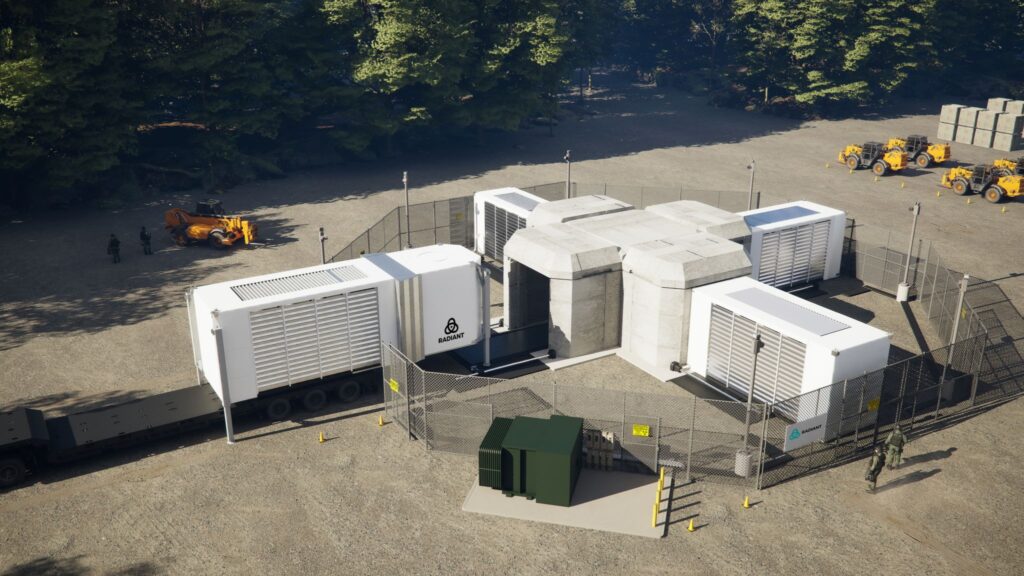
Photo Courtesy Radiant
All participants acknowledged some challenges – Dr. Baranwal mentioned congestion in the supply chain, as all companies in the DOE program depend on the same limited number of vendors for fuel. Brown added that for particular parts of the supply chain, such as large forgings, the country has been content to rely on foreign countries like Germany, and onshoring will be a long-term struggle. Plus, the only commercial domestic enrichment facility in New Mexico can only meet about one-third of American demand. O’Brien noted that the nuclear workforce and knowledge base are aging: “Doing state-level lobbying, we’re hearing a lot of, ‘How do we help you build that workforce and get ready for what’s coming next?’”
Simultaneously, they clocked the significant interest from the private sector in participating in the artificial intelligence race. Meta is buying the entire output of more than 800 megawatts of generation from Constellation’s Crane Clean Energy Center through a 20-year power purchase agreement, for example. Harrell noted that sector investments have also come from Amazon, Google, and Meta “because nuclear can play a really important role in meeting that significant demand that’s coming from data centers from AI, but also from increased focus on manufacturing in this country as a whole.” Dr. Baranwal added that Equinix has agreed to buy 20 of Radiant’s microreactors, so while she is “certainly thrilled to see the large deals, and I fully agree that the output needs are massive,” she added that there is “room for all of the players in this sector to benefit from this huge demand.”
In terms of the public sector, Dr. Baranwal expressed that the country’s national laboratories are already hard at work providing support to the industry. For example, “They can lean on the facilities that are there. They can access the historical data that has been generated with our taxpayer dollars over the decades,” she listed. “Continuing to access the expertise that is within DOE and the government agencies, as well as the national labs, is what I would encourage all of us to continue doing, because there is absolutely no sense in reinventing something that’s already been done,” she simplified.
Harrell noted that the industry has seen “encouraging signs from the administration’s executive orders in ways of, how can we get creative with DOE resources and do project delivery faster? How can we deploy on federal sites? … Can we leverage tools like the Department of Energy’s Loan Program Office to help us build the order book for new reactors?” Dr. Baranwal agreed that after providing insights to the NRC about accelerating and reforming regulations, “we’re starting to anticipate that some of those suggestions are being considered, and we are going to see reforms in both DOE and NRC regulations.” Harrell’s thesis statement was that “there’s a huge opportunity here to put the whole of government behind deploying this next generation of new nuclear… but we’ve got to do things a little differently than we have done on the past, on the regulatory, on the way that we partner with the government.”
O’Brien’s description of Holtec’s activities this year was inspiring for the industry as a whole: “It’s really time for the industry to put our money where our mouth is. The government’s come up with a lot of money for R&D. Now we have to commercialize that… We actually have to show we can build it here, replicate it here, and not repeat the mistakes of the past.”

